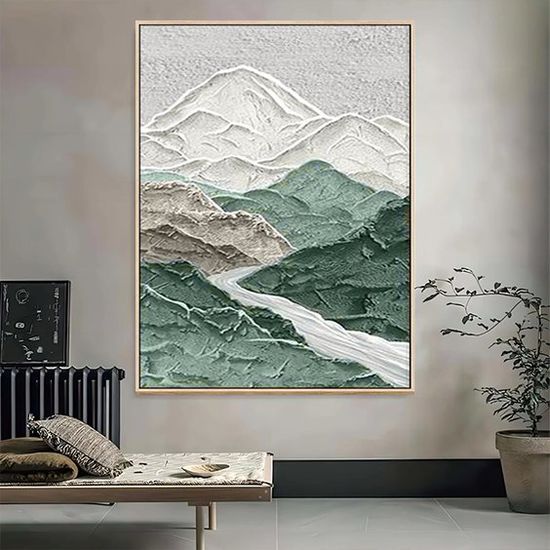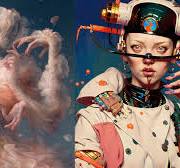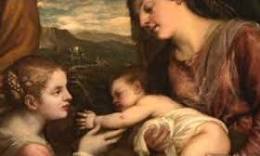The Captivating World of Rothko Paintings
Mark Rothko, a renowned American artist of the mid-20th century, is celebrated for his unique style and profound impact on the abstract expressionist movement. His paintings are characterized by large, color-field compositions that evoke deep emotional responses and contemplation.
Rothko’s signature works often feature expansive canvases filled with vibrant blocks of color that seem to pulsate with energy. The interplay of hues and the subtle variations in tone create a sense of depth and intensity that draws viewers into a mesmerizing visual experience.
One of the most striking aspects of Rothko’s paintings is their ability to evoke a wide range of emotions without relying on representational imagery. The artist believed that color itself could convey complex feelings and states of being, allowing viewers to connect with the essence of his work on a profound level.
Rothko’s exploration of color and form goes beyond mere aesthetics; it delves into the fundamental aspects of human experience and spirituality. His paintings are often described as meditative or transcendent, inviting viewers to contemplate their own inner landscapes and emotional responses.
Through his masterful use of color, shape, and scale, Rothko created a body of work that continues to captivate audiences around the world. His legacy as a pioneer in abstract art endures, inspiring new generations of artists to push the boundaries of creativity and expression.
Experience the captivating world of Rothko paintings for yourself and immerse yourself in the beauty and complexity of abstract expressionism.
Exploring the Depths of Emotion: 9 Insights into Rothko’s Colorful Masterpieces
- Rothko’s paintings are known for their large blocks of color.
- He often used a technique called color field painting.
- Rothko’s work is characterized by its emotional depth and intensity.
- His use of color was influenced by his interest in mythology and philosophy.
- Rothko believed that art should evoke human emotions and experiences.
- His paintings can create a meditative and contemplative atmosphere.
- Rothko’s compositions often feature floating, rectangular forms.
- ‘Multiforms’ is a term used to describe some of Rothko’s later works with more organic shapes.
- Viewing Rothko’s art up close versus from a distance can offer different experiences.
Rothko’s paintings are known for their large blocks of color.
Rothko’s artistic style is distinguished by his use of large blocks of color in his paintings. These expansive color fields, meticulously arranged on the canvas, create a powerful visual impact that draws viewers into a contemplative and immersive experience. The deliberate choice of colors and their arrangement in Rothko’s work conveys a sense of depth, emotion, and intensity, inviting viewers to explore the subtle nuances and profound meanings within each composition.
He often used a technique called color field painting.
Mark Rothko, a prominent figure in the realm of abstract expressionism, frequently employed a technique known as color field painting in his works. This method involved creating large expanses of solid color on the canvas, allowing the hues to interact and resonate with each other in a profound and emotive manner. By utilizing color as the primary vehicle for conveying meaning and emotion, Rothko’s color field paintings transcend traditional representational art, inviting viewers to immerse themselves in a world where colors speak volumes and evoke deep emotional responses.
Rothko’s work is characterized by its emotional depth and intensity.
Rothko’s paintings are distinguished by their profound emotional depth and intense presence. Through the masterful use of color, form, and scale, Rothko creates artworks that resonate with viewers on a visceral level, eliciting a wide range of emotions and contemplative responses. The interplay of vibrant hues and subtle transitions in his compositions imbues his work with a sense of raw emotion and inner turmoil, inviting viewers to immerse themselves in the rich tapestry of feelings evoked by each brushstroke. In essence, Rothko’s art transcends mere visual representation to become a powerful conduit for exploring the depths of human emotion and experience.
His use of color was influenced by his interest in mythology and philosophy.
Mark Rothko’s use of color in his paintings was deeply influenced by his fascination with mythology and philosophy. Drawing inspiration from ancient stories and profound philosophical concepts, Rothko infused his artworks with layers of meaning and symbolism through his carefully chosen color palettes. Each hue and shade in his compositions was meticulously selected to evoke specific emotions and convey abstract ideas, creating a visual language that transcended the canvas and resonated with viewers on a spiritual and intellectual level.
Rothko believed that art should evoke human emotions and experiences.
Mark Rothko, a visionary artist in the abstract expressionist movement, held a profound belief that art should serve as a conduit for evoking human emotions and experiences. For Rothko, the true essence of art lay in its ability to resonate with viewers on a deeply emotional and personal level. Through his iconic color-field paintings, Rothko aimed to create spaces that were not just visually striking but also capable of eliciting profound feelings and contemplation. His commitment to harnessing the power of art to evoke raw human emotions remains a cornerstone of his enduring legacy in the world of contemporary art.
His paintings can create a meditative and contemplative atmosphere.
Mark Rothko’s paintings have the remarkable ability to cultivate a meditative and contemplative atmosphere. Through his use of color, form, and scale, Rothko invites viewers to immerse themselves in a world of deep introspection and emotional resonance. The expansive color fields in his artworks encourage quiet reflection and inner exploration, allowing individuals to connect with the profound essence of the human experience. Engaging with Rothko’s paintings can be a transformative experience, guiding viewers on a journey of self-discovery and spiritual contemplation.
Rothko’s compositions often feature floating, rectangular forms.
Mark Rothko’s artistic compositions are frequently characterized by the presence of floating, rectangular forms. These geometric shapes, seemingly suspended in space, contribute to the ethereal and contemplative nature of his paintings. The juxtaposition of these distinct forms against expansive color fields creates a sense of depth and movement within the canvas, inviting viewers to engage with the interplay between shape and color. Rothko’s deliberate arrangement of these floating rectangles adds a dynamic element to his work, enhancing the overall visual impact and emotional resonance of his art.
‘Multiforms’ is a term used to describe some of Rothko’s later works with more organic shapes.
In some of Mark Rothko’s later works, he explored a style known as ‘Multiforms,’ which featured more organic shapes compared to his earlier geometric compositions. This shift in form allowed Rothko to delve deeper into the expressive potential of color and shape, creating artworks that exuded a sense of fluidity and dynamism. The ‘Multiforms’ series showcases Rothko’s evolving artistic vision and his willingness to experiment with new forms of abstraction, further cementing his legacy as a trailblazer in the world of modern art.
Viewing Rothko’s art up close versus from a distance can offer different experiences.
When it comes to appreciating Rothko’s art, the experience of viewing his paintings up close versus from a distance can offer contrasting yet equally enriching experiences. Up close, observers can immerse themselves in the intricate details of Rothko’s brushstrokes and the subtle nuances of color blending, allowing for a more intimate and tactile encounter with the artwork. On the other hand, stepping back to view Rothko’s paintings from a distance reveals the full impact of his color-field compositions, as the colors interact and merge to create a harmonious and immersive visual experience. Both perspectives provide unique insights into Rothko’s artistic vision and invite viewers to engage with his work on multiple levels.




